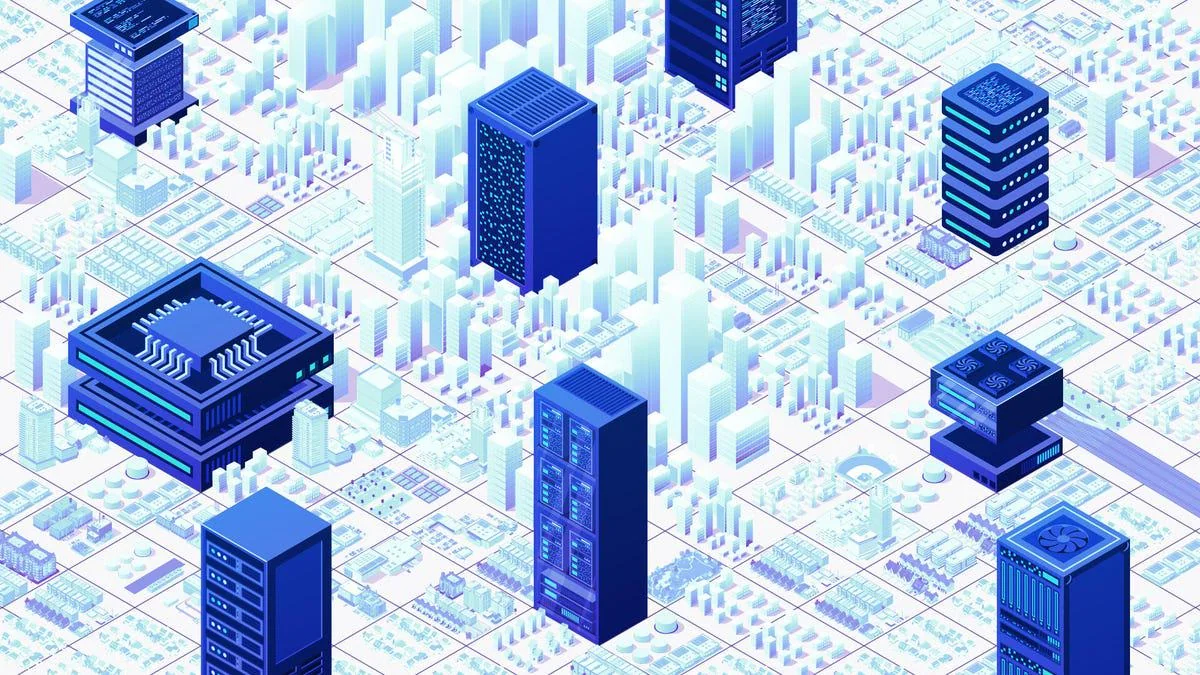AI Data Centers Are Consuming Land, Water, and Power — The Hidden Cost of Generative AI
 Date: 18/08/2025
Date: 18/08/2025
From the outside, a facility in Piscataway, New Jersey, looks like any other corporate office. But once inside, the humming of servers, the flashing lights, and the cold rush of air reveal its true identity: a data center.
Rows of 7-foot-high racks consume staggering amounts of electricity — this particular facility can handle up to 3 megawatts of power. And it’s just one of thousands of data centers across the United States powering our online lives: photo storage, video streaming, financial transactions — and now, the explosive rise of generative AI.
These buildings are the factories of the AI era, churning out the computing power behind ChatGPT, Google’s Gemini, Anthropic’s Claude, Microsoft’s Copilot, and countless other tools. But as they multiply at unprecedented rates, they are leaving behind questions about energy demand, water use, environmental strain, and local impact.
AI’s Growth Has Triggered a Data Center BoomSince OpenAI launched ChatGPT in late 2022, adoption has skyrocketed to nearly 700 million weekly users and 5 million paying businesses. Tech giants — Amazon, Apple, Google, Meta, Microsoft, and OpenAI — have responded with massive investments in AI infrastructure.
-
Meta is spending $10 billion on its “Hyperion” AI data center in Louisiana, which could cover a footprint comparable to Manhattan.
-
Google announced $25 billion for new AI facilities in Pennsylvania as part of a $90 billion statewide tech push.
-
Stargate Project, backed by OpenAI, Oracle, and Softbank, plans a $500 billion investment in AI infrastructure, including a 1.2-gigawatt Texas site that could power 750,000 homes.
Today, Amazon Web Services, Google, Meta, and Microsoft control 42% of U.S. data center capacity, spending nearly $100 billion per quarter to fuel AI’s expansion.
The Environmental Cost: Power and WaterA single AI query uses 10 times more electricity than a standard Google search. Multiply that by millions of queries each day, and the strain becomes obvious.
-
The U.S. Department of Energy warns AI data centers are a key driver of national electricity demand growth.
-
By 2035, U.S. data centers’ electricity demand is expected to double.
-
Some new sites, like Meta’s Hyperion, require 2 gigawatts of power — comparable to powering a large city.
Water is another critical resource. Data centers rely on water for cooling, and the numbers are staggering:
-
A Google facility in Oregon used 355 million gallons in one year.
-
In Iowa, Google’s Council Bluffs centers consumed 1.4 billion gallons in 2024 alone.
-
Meta’s global data centers drew 1.39 billion gallons of water in 2023.
While tech firms pledge to become “water positive” by 2030, experts question whether such goals are realistic given AI’s breakneck expansion.
Communities Push BackLocal opposition is growing.
-
In Clifton Township, Pennsylvania, residents are fighting a proposed 1,000-acre data center campus that would require 34 wells, raising fears of water depletion.
-
In Louisiana, critics say Meta’s Hyperion project will destroy 2,250 acres of farmland and deliver far fewer permanent jobs than advertised.
-
In Virginia, the world’s busiest hub for data centers, electricity rates are projected to rise over 25% by 2030 due to the industry’s demand.
“Everybody in Clifton is on a well,” said resident June Ejk. “If there’s that kind of demand for 34 more wells, you’re going to drain everybody’s water. Then what do they do?”
Climate Goals vs. AI ExpansionTech companies continue to market sustainability pledges:
-
Google and Amazon aim for net-zero emissions by 2040.
-
Meta promises 100% clean energy for its facilities by 2030.
-
Microsoft is transitioning new centers to closed-loop cooling systems.
But reality paints a harsher picture. Google’s carbon emissions in 2024 were 51% higher than in 2019, even as it doubled down on AI infrastructure.
“Wanting to grow AI at that speed and at the same time meet your climate goals are not compatible,” warned Quentin Good, policy analyst at Frontier Group.
The Road AheadThere are now over 5,000 data centers in the U.S., and the number is climbing rapidly. Many communities see them as job creators and tax revenue sources, but critics argue the environmental costs, higher utility rates, and land grabs outweigh the benefits.
The Trump administration’s AI Action Plan is pushing for even faster expansion, calling for fewer environmental regulations and streamlined construction. Meanwhile, researchers warn that without urgent grid updates, AI’s rising energy pull could destabilize U.S. power systems.
As Carnegie Mellon professor Ramayya Krishnan puts it:
“Data centers are a critical part of the AI production process. Think of them as AI factories.”












.jpg)





.jpg)
.jpg)

